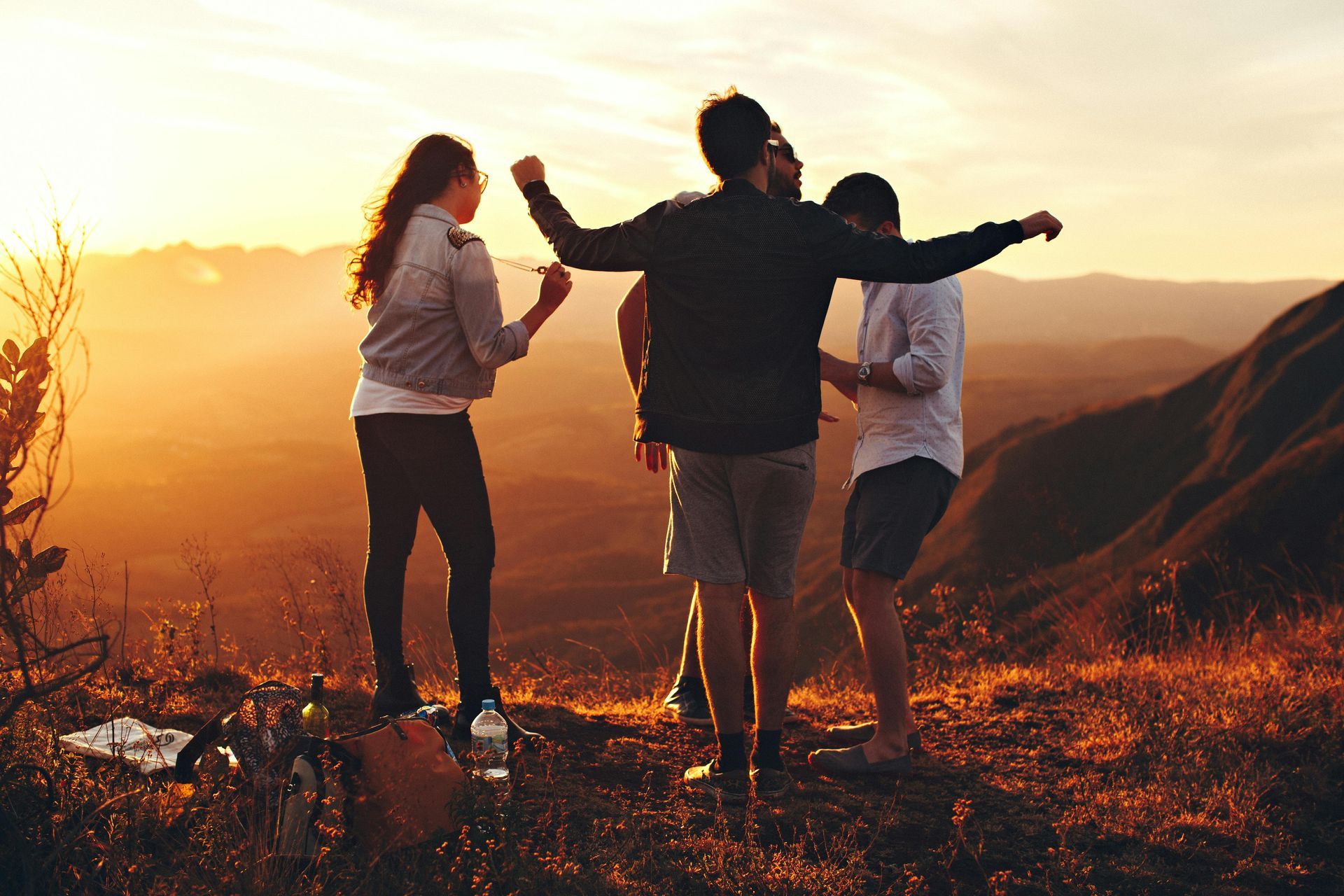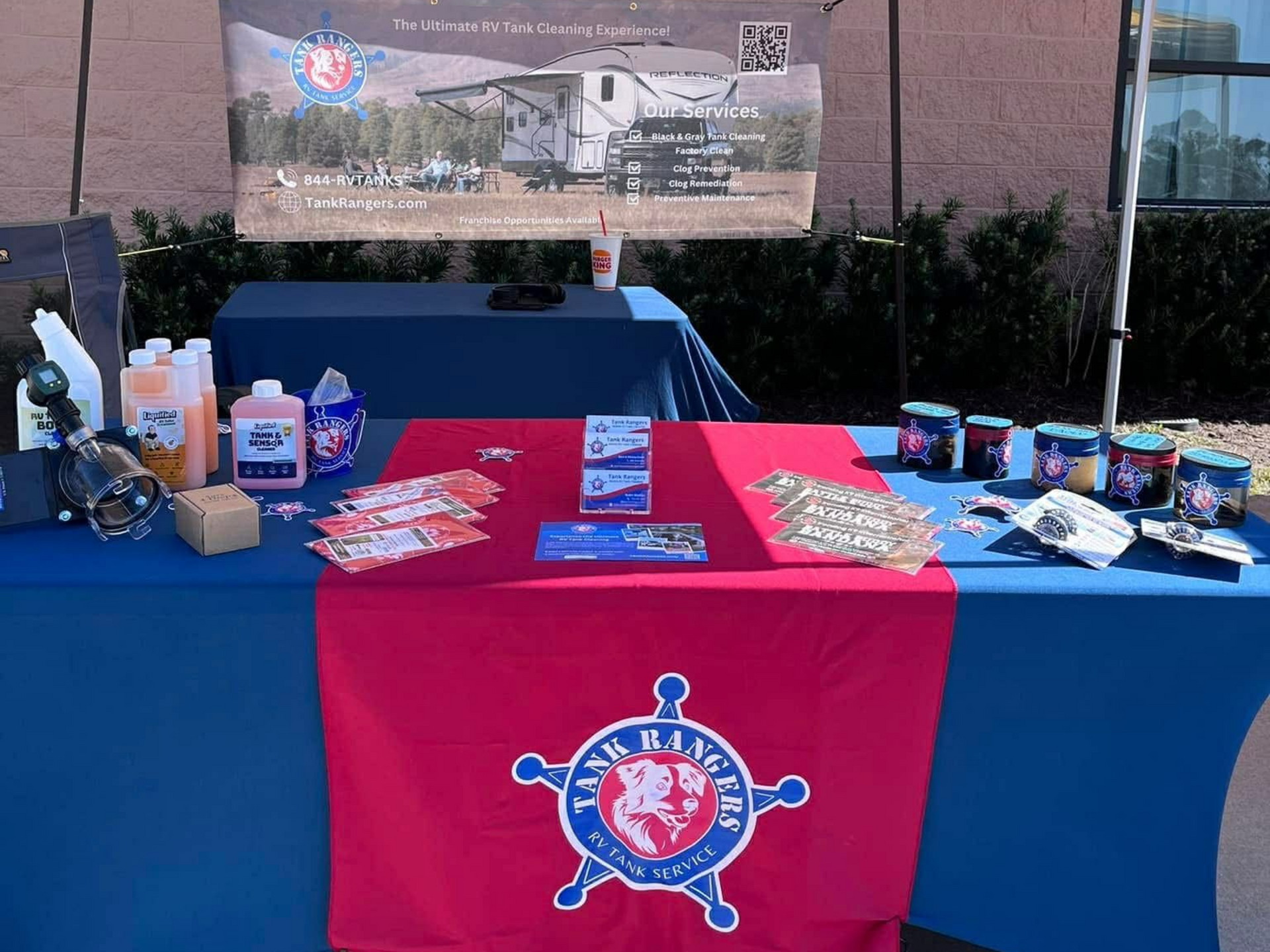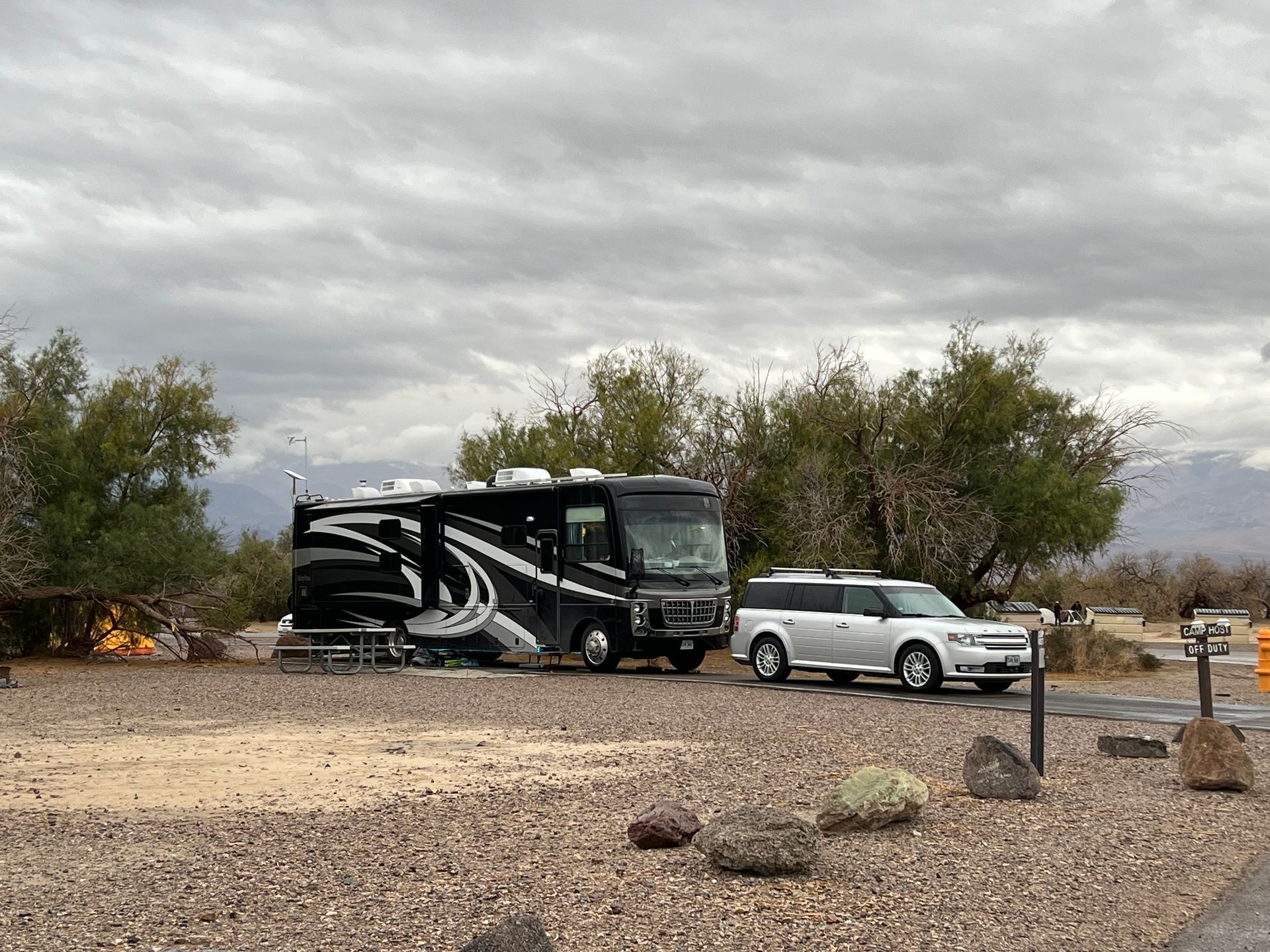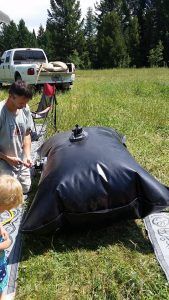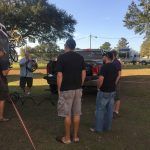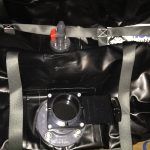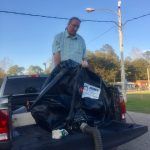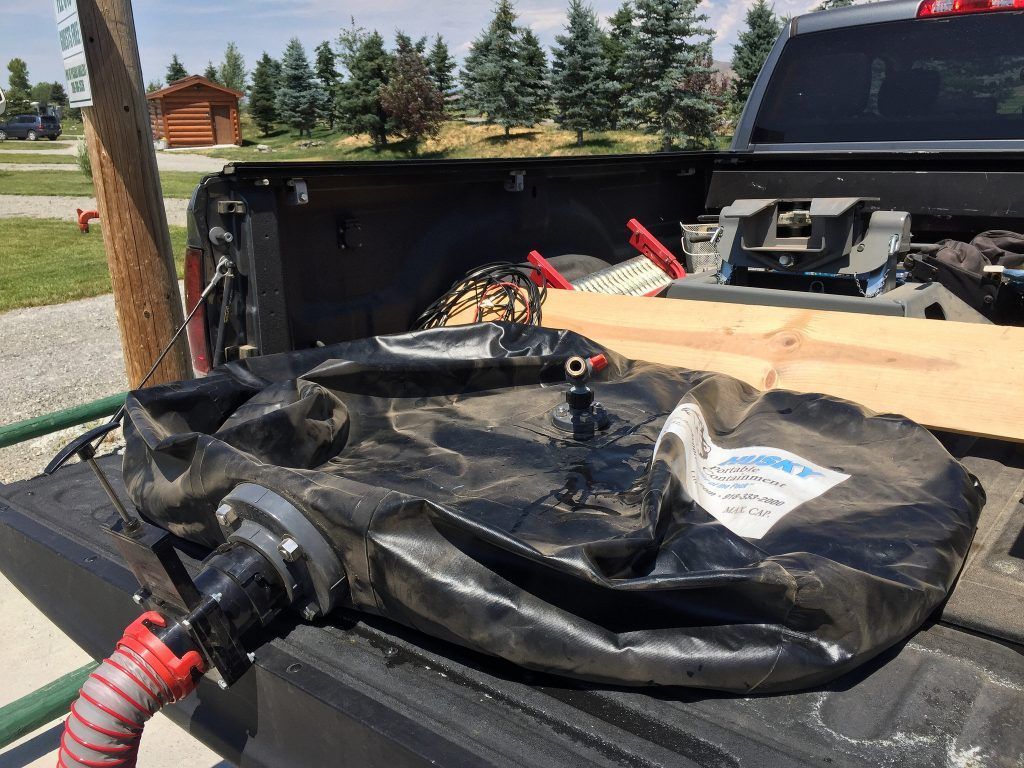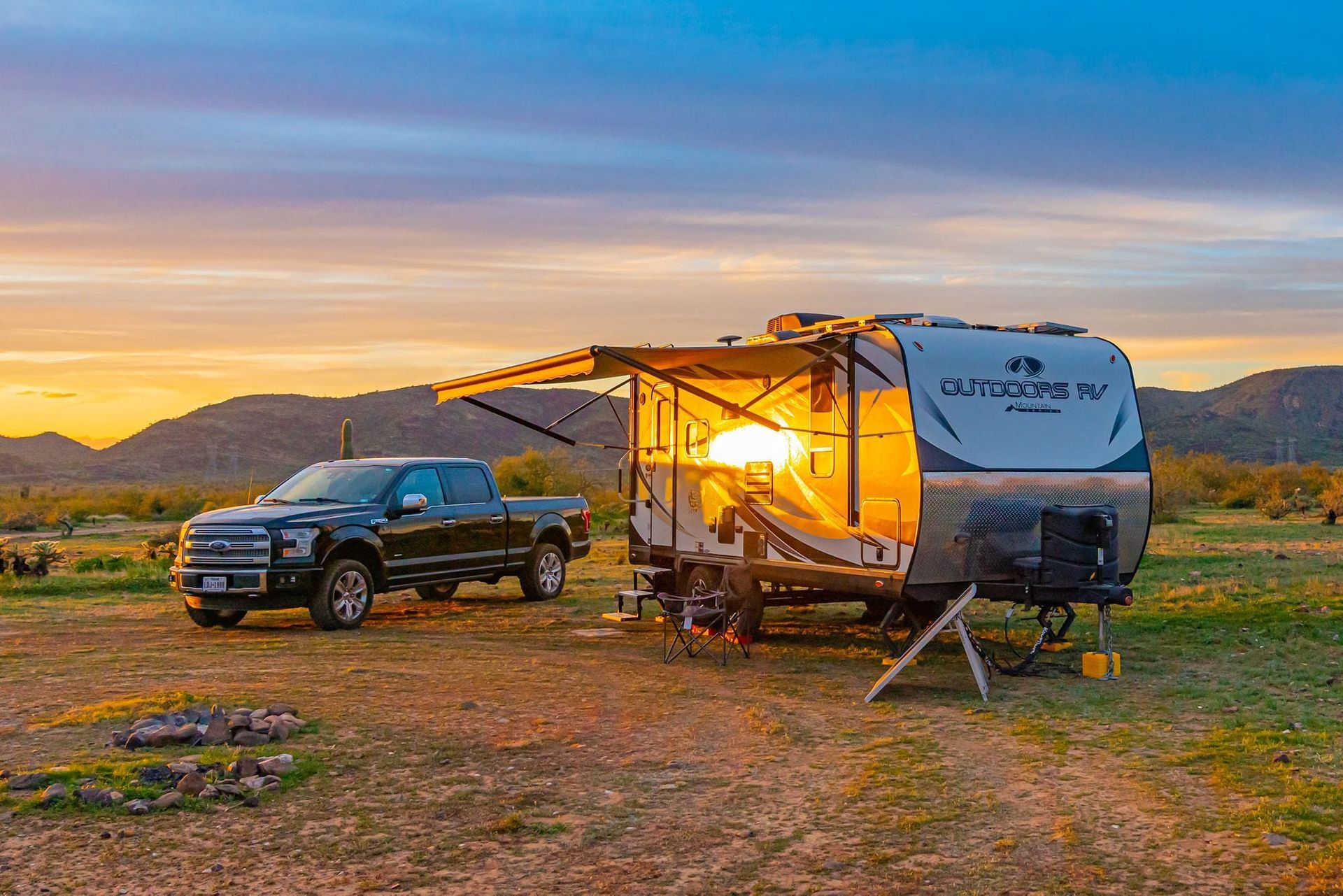Better Than a Turd Hearse - A Sewer Bladder
Doug S • April 23, 2025
When camping without sewer your options are to either break camp and take your rig to the dump station or the alternative is that you get a method for carrying your “stuff” to the dump station. Most campers end up with a wheeled cart and they give it cute a name like “turd hearse”. But I’m not like other people… for me, instead I opted for a bladder and here’s why.
(Note, no disclaimer needed for this post. I paid full-price for the bladder with no deal or discount from the company.)
Inspiration
A couple of years ago, I was at a Fulltime Families rally in Branson, MO. Part of the rally is the Parade of Homes where a handful of families open their campers for the rest of us to parade through. You get to see interesting modifications, decorating ideas, and general life inspiration walking through the rigs. One of the fellows had a big sewer bladder laying out and described how he could offload close to 100 gallons of gray and black water to it.
What intrigued me about the bladder was the portability/size vs. the bladder’s capacity.
DIY
Pieter built his sewer bladder. He shared the list of products he used to build it on a Facebook post. I have them documented in a Google Docs worksheet.
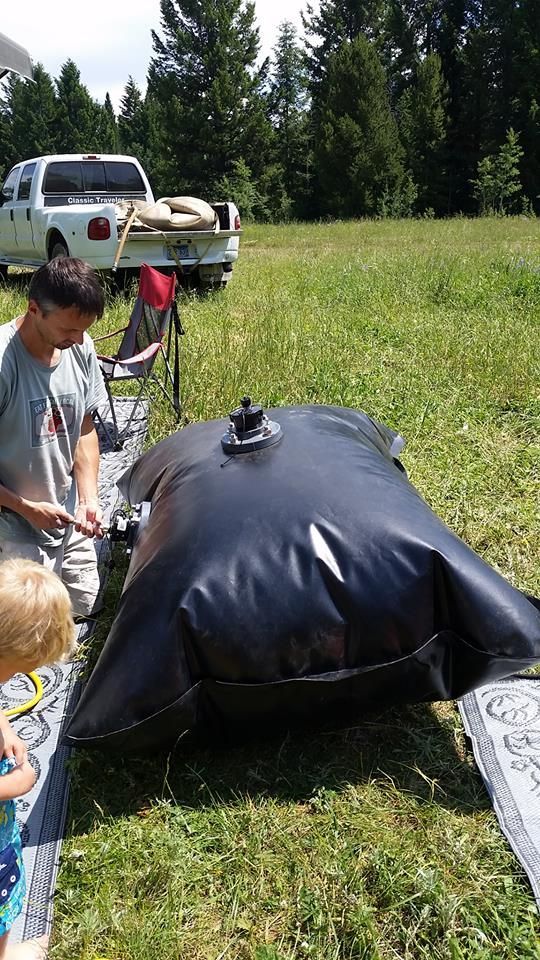
There are 2 things missing from the spreadsheet and #1 is a huge one. I couldn’t find any sellers of this fabric. When I contacted the manufacturer, they couldn’t offer up anyone who sold the fabric, just people who built things using it. #2 is the heat gun… you need a heat gun that you can finely tune. This isn’t the Craftsman that you have on the garage shelf already. But the good news is, it’s only about $50 on Amazon.
Also listed in the spreadsheet are a few bulkhead fittings: a 3″ fitting for connecting the sewer hose and a 1″ fitting for connecting the water hose (which is connected to the macerator pump at the other end).
DIY, my guess is you’ll be in for about $200-250 in parts plus time.
Buying
Ultimately, I wasted away the time I had set aside to build this and suddenly needed it quickly. DIY was no longer an option as finding the parts and then building it would take too much time. Instead, I contacted one of the companies that the fabric manufacturer had given me, Husky Portable Containment.
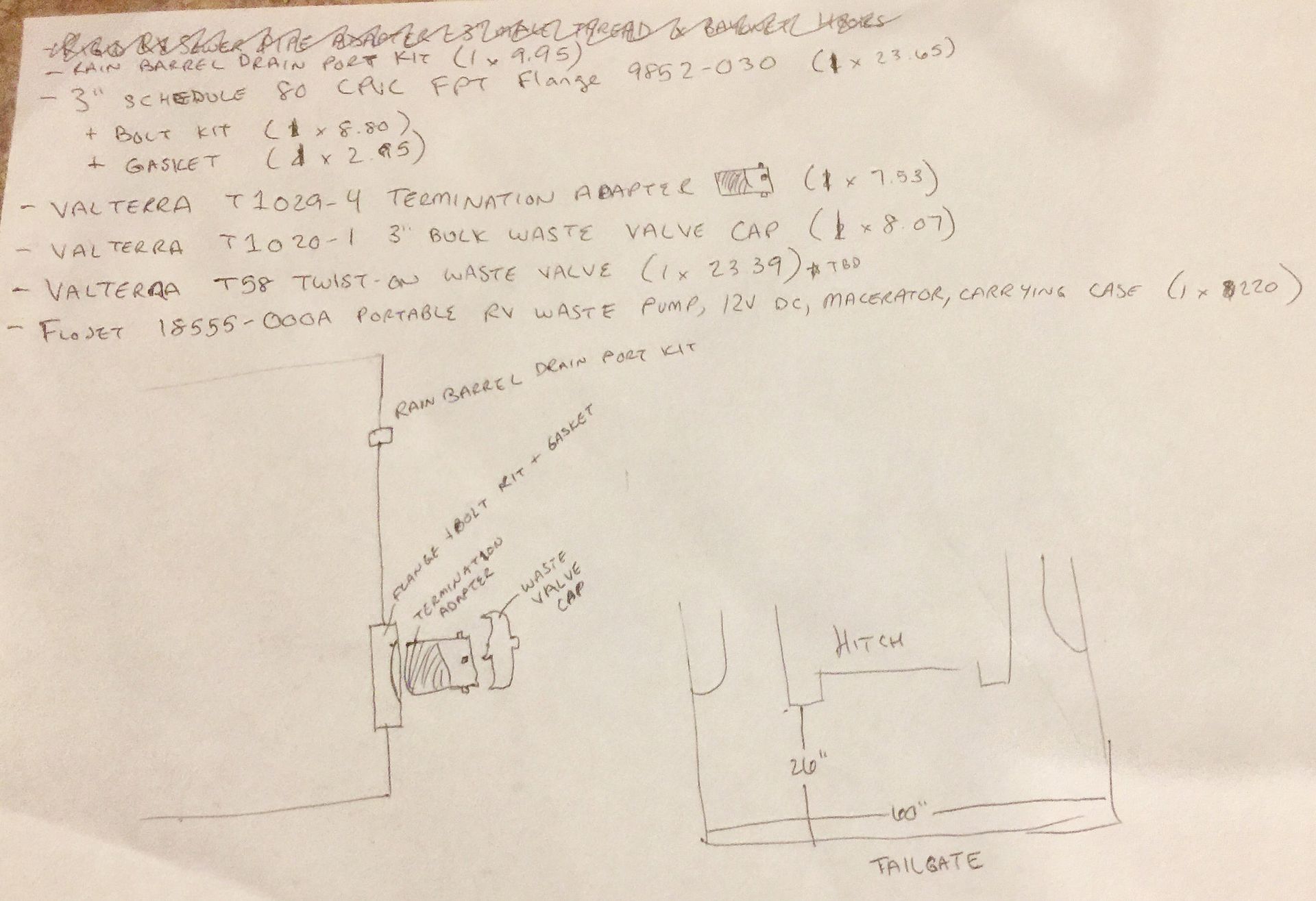
I explained what I wanted and provided a crude drawing of the space I had, the fittings I wanted, and general dimensions. They designed a 115-125 gallon capacity bladder that wasn’t flat like the DIY solution. Instead it’s a cylinder shape. The cost was quite a bit more than I had prepared myself to spend at $385 plus shipping from Oklahoma.
I gave them a hard deadline for when it needed to be to me (which was in time for a rally with Fulltime Families at the Tallahassee Fairgrounds). They met the deadline and shipped me a bladder that was built way better than I could have.
I also opted for buying a “seat belt” system from them. This is a set of straps that encircle the bladder and gives me a way of securing it in cases where I have to travel down a road to get to a dump station (vs. staying in a campground at low speeds). This was another $75 cost. I have used this a couple of times… I’m not sure if I would get it again or if I would talk to them about different secure attachment points.
The bladder came with a 3″ threaded connection that I still needed to add a gate valve. For simplicity, I opted for a Valterra termination adapter and then a twist-on gate valve. Doing it again, I would get a real hard-plumbed gate valve as my twist on has a bad habit of twisting OFF.
It came with a 1″ hose connection with a quarter-turn valve for closing it.
Lastly, I would have Husky add grab/lifting handles for aiding in emptying the bag.
Also Needed
To make this work, you’ll need a macerator pump. Flojet has the market fairly cornered with their 12v pumps. Unfortunately, it’s hit or miss if you’ll get a pump that regularly overheats. Mine and a friend’s are golden but 2 other friends have issues. Even with the issues, I still recommend it.

As well, you need a hose to go between the camper and the bladder. I bought a dedicated hose: a 3/4″ by 50′ hose. You can get away with a smaller diameter and possibly even a longer hose. But I’ve found that 50′ works well for me.
In addition, you’ll want a way to shut off the hose in the case anything ever malfunctions. I added a quarter-turn valve to the hose and carry a cap for the opposite end (since the bladder already has its own quarter turn shut off valve). This lets me isolate my hose in the event of an “incident”.
Depending on your lazy-level, you might also consider quick connects for the hose. Bear in mind, these reduce the inner diameter of the hose which in turn makes your pump work harder. The convenience is totes worth it for me, though!
Use
 The bladder has exceeded all of my expectations. When we are on a site without sewer, we continue to use the camper just like we normally would- we take showers without shutting off the water, we run laundry, and we even let the kids do dishes. I make a plan for a daily dumping of our two 40 gallon gray water tanks (though neither are typically full).
The bladder has exceeded all of my expectations. When we are on a site without sewer, we continue to use the camper just like we normally would- we take showers without shutting off the water, we run laundry, and we even let the kids do dishes. I make a plan for a daily dumping of our two 40 gallon gray water tanks (though neither are typically full).
I setup the bladder in the back of my truck between the hitch and the tailgate. I use a 1 x 10 to keep it from pressing on the hitch.
I connect the 50′ x 3/4″ hose to the bladder using quick connect (these reduce the inner diameter but are just so dang convenient).
Depending on where I’m going, I might secure the bladder in some way. Either with the seat belt or with just a couple of straps running from the sides of the 5th wheel hitch to my truck’s hitch below the bumper.
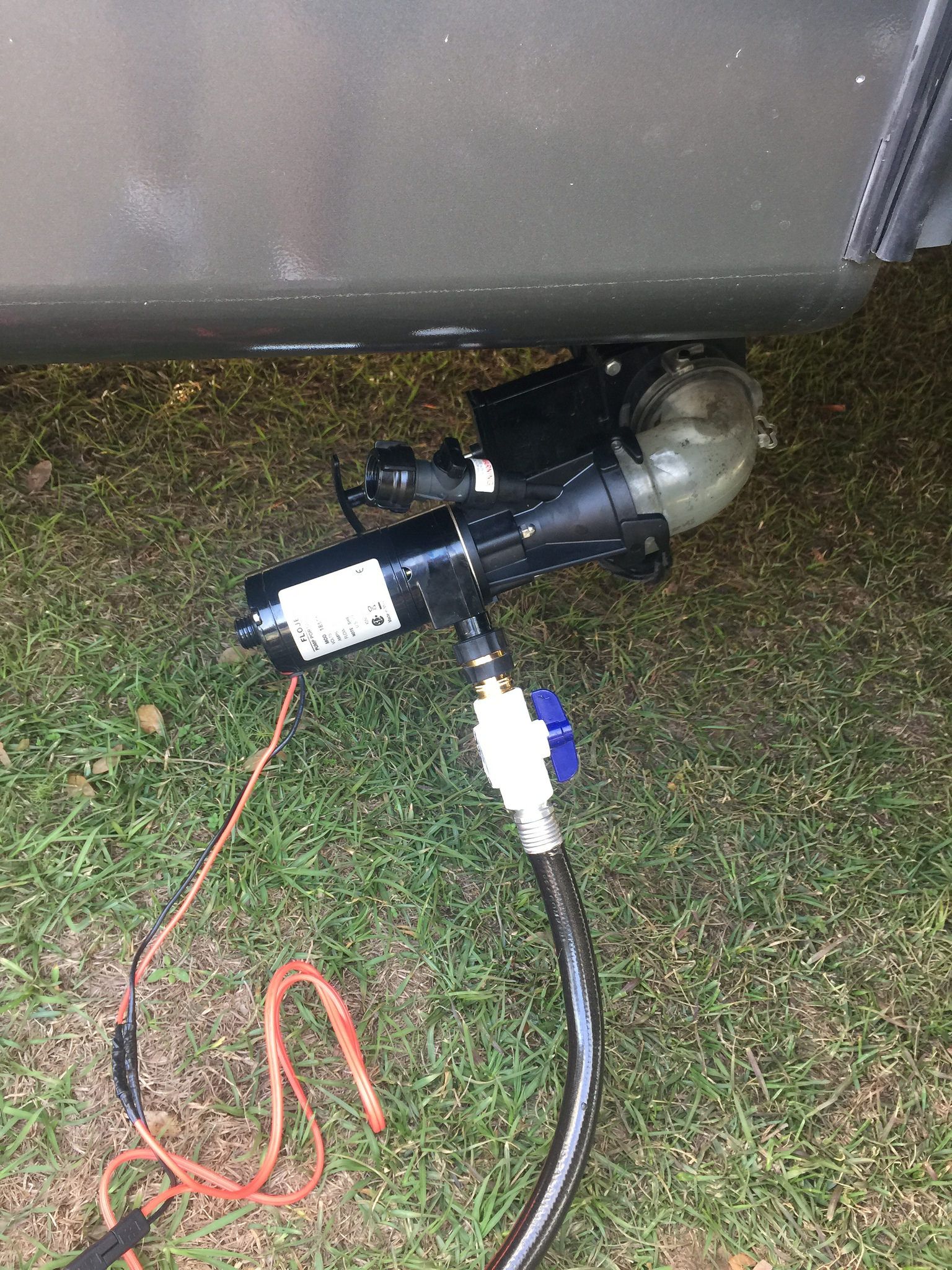
From there, I get the pump setup and connected to the sewer outlet. I either pull power from the truck’s battery or from the camper’s batteries. This is the most annoying part currently: I either have to open the hood to get to the truck battery or I have to open part of the basement to get to the camper batteries. I think I want to add a quick connector but it has to be something that I can move as I often pump out friends tanks.
I hook this business end of the hose up and then it’s a matter of double-checking all of the connections. Sadly, I’ve had a couple of mishaps… but let’s not talk of them!
Once everything looks legit, I pull the sewer valves and run the pump to carry the icky water from the camper up to the sewer bladder in the truck.
Once I’ve emptied my tanks, I’ll run the pump empty for a bit trying to get the blech water out of it. I’ll often “walk” the hose to fully empty it and will cap it once it’s disconnected.
I’ll drive to the dump station where I’ll connect the 3″ sewer hose and will dump. I do have to lift the bag so that all of the yuck water makes it into the hose and down the hole.
If I’m putting the bladder away for a while, I might hookup a hose to spray out the inside of the bladder.
Once back at camp, I put everything away. I found a nice tote that holds the bladder. The 3/4″ hose gets coiled up and capped and thrown into the truck bed.
Success
We camped without sewer hook ups for about 45 days straight this July and August. We also successfully boondocked for 2 weeks at the Albuquerque Balloon Fiesta. We used the bladder and I even loaned it out for a friend to use.
If I had the money, I would order a dozen bladders to sell them. I’m betting if the final price with fittings could get down to close to $300-350 (plus a macerator + hose), these would sell quite well in the RV world. Unfortunately, I don’t have the capital or the space for handling shipping of these. Please someone steal my idea!
Other blogs you might like...
